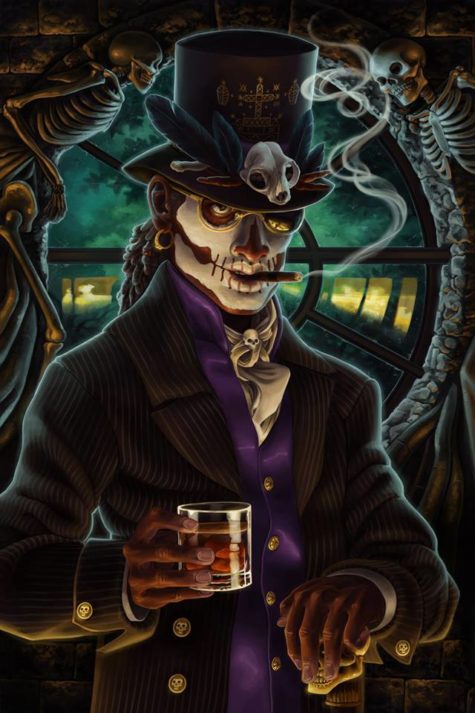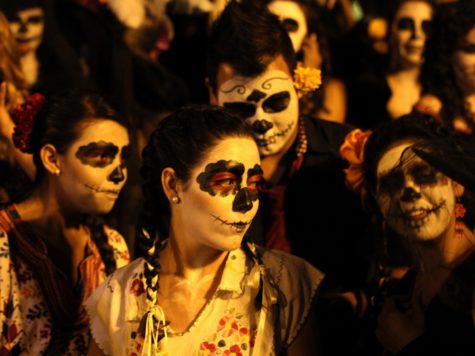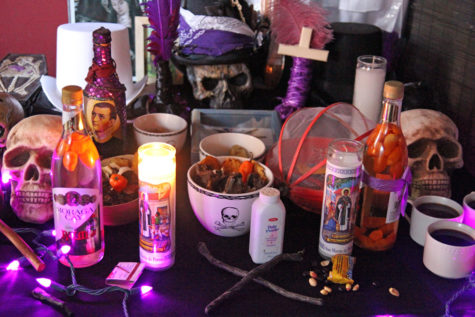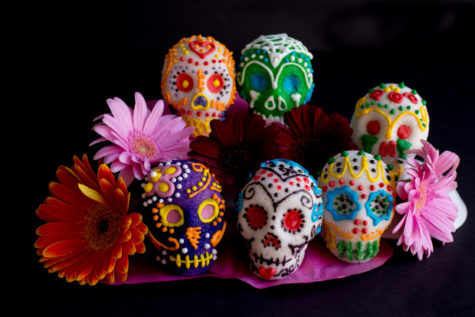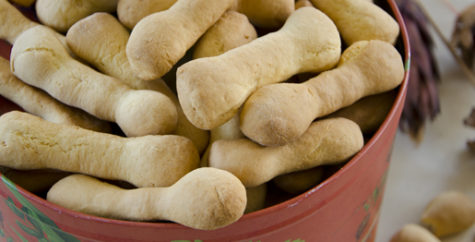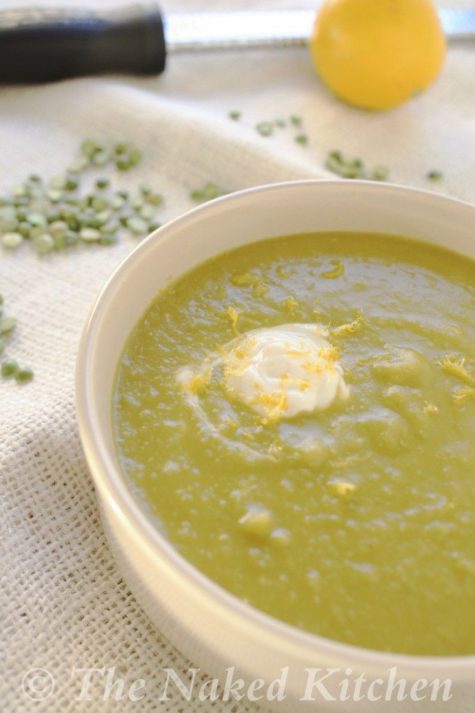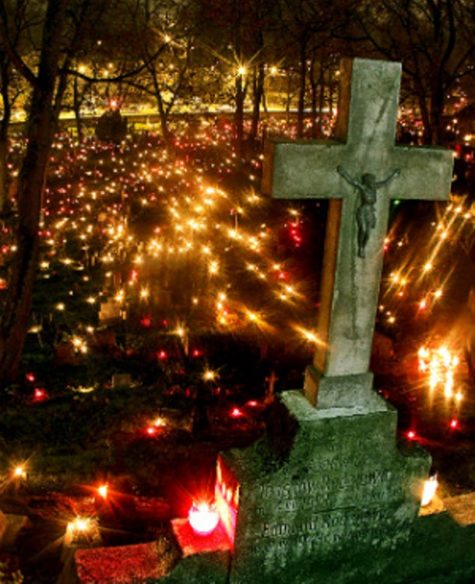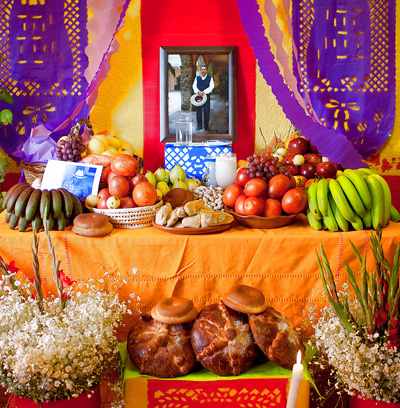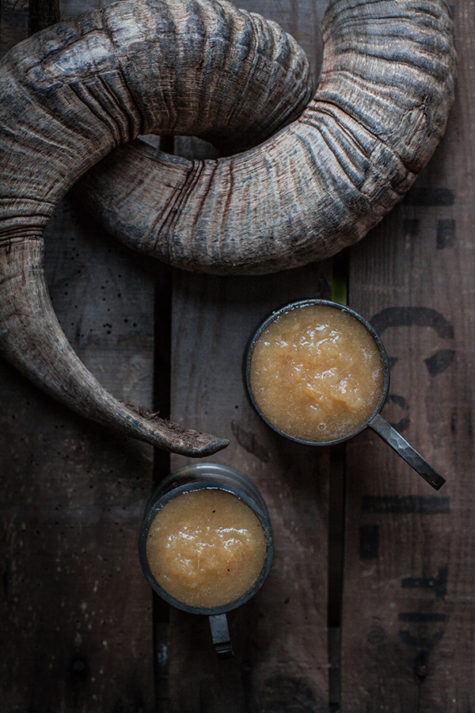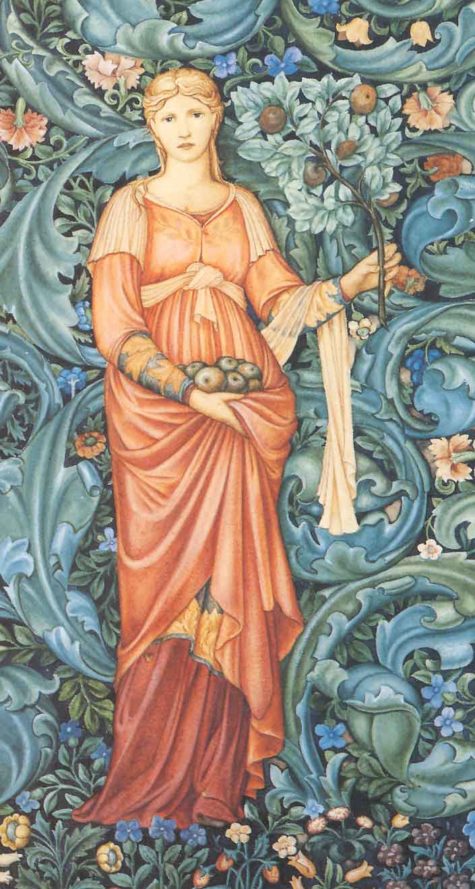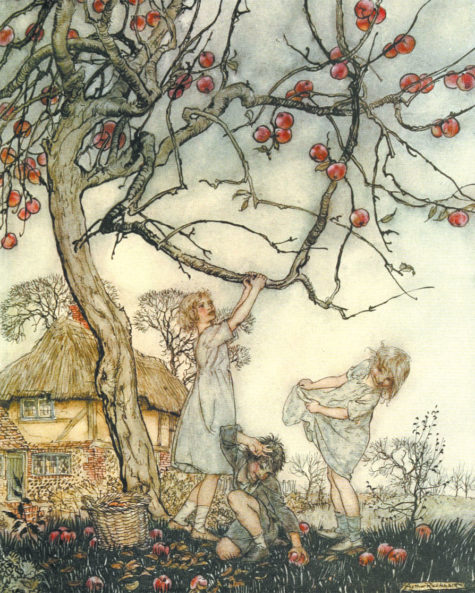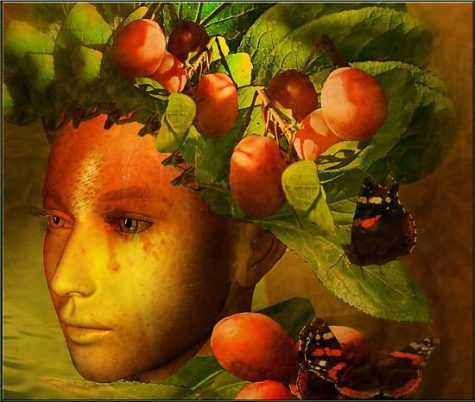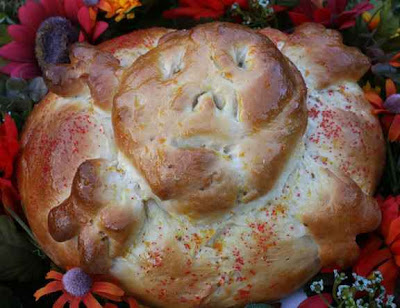Daily Archives: November 1, 2017
“It’s like New Year’s Day for the dead.” That’s how Sherly Turenne sums up the celebration for Ghede spirits, led by Baron Samedi, god of death in Haiti’s Vodun tradition.
He is anticipated with happiness as the protector of children, provider of wise advice and the last best hope for the seriously ill. Celebrated on Nov. 2, along with the Catholic All Souls’ Day, Ghede (GEH-day) is also a day to remember and honor ancestors.
All boons granted by the Ghede must be repaid by this date or they will take their vengeance on you.
About the Ghede:
With a population of 8.5 million, Haiti is 90 percent Catholic and 100 percent Vodun (VOH-doon), a religion that accommodated the practices and principles of captives from Dahomey, Yorubaland, Congo and Angola who were brought to the island during the African slave trade.
The Dahomey/Yoruba term can refer both to the verb gede, to cut through, and igede, incantation, hinting at cutting through to mystery, in this case the mystery of death. Because the Africans combined the elements of their various geographical regions, there came to be in Haiti many Ghedes, several Barons and a creole term referring to a formal god, all referring to the dead and death itself.
Ghedes are part of the pantheon of gods known as Loa (Loh-WAH). Ghede then, as the ruler of death and embodying also the principle of resurrection, governs the preservation and renewal of life. He is sometimes also referred to with affection as Papa Ghede.
The Celebration:
People will put on their Sunday best, and go to church first thing in the morning to pray.
Then they will go home and put on the regalia of the ragtag Ghedes, as the spirits of the underworld are often called, or the elegant Baron Samedi (SAHM-dee) in his black, white and purple color scheme. An outfit can be as simple as a white blouse and skirt and purple neck scarf or can include a black top hat and tails, a baton or cane, a red bandanna or multicolored necklaces.
It is also common to wear makeup – painting half the face white with black around the eyes or even just dusting the face with flour. Once dressed, celebrants go to the town cemetery, where those who have ancestors there will clean the tombs of their loved ones and leave food for them in remembrance.
The spiritual adepts, the women called mambos and the men called houngans (HONE-gahn), joined by drummers and singers, will pray at a cross rising from a tomb, the symbol of Baron Samedi, summoning the spirits. And then the partying begins.
The seeming contradiction may be difficult for Americans to comprehend. The god of death, Baron Samedi nevertheless pokes fun at death and with his raunchy humor and suggestive, lewd dancing makes fun of the human passion that brings life.
A typical altar in honor of Ghede would include cigarettes; clarin, a Haitian white rum spiced with habanero peppers; a small white image of a skull; white, black and purple candles; satin fabric in the same colors; crosses; a miniature coffin; sequined bottles and a chromolithograph of St. Gerard, a saint associated with Baron Samedi. No altar would be complete without the requisite top hat and cane.
Preparing a feast
Oakland dance instructor Portsha Jefferson, whose great-grandmother was Haitian, has been celebrating the holiday for years, both at home and as part of a public gathering. She will prepare a veritable feast for her ancestors, including greens, yams, macaroni and cheese, corn bread, red beans and rice, cabbage, baked chicken and fried snapper, with sweet potato pie for their dessert.
She will begin her day by pouring a libation and offering a prayer in thanks and ask for their blessing. Her altar for Ghede will be refreshed with clarin and set with a vase of fresh flowers and a new white candle. Then she’ll pack up her scandalous Ghede outfit, a black gown with silver and purple sequins that is slit on each side to midthigh, borrow the Baron’s top hat and go to the community celebration, which she has been planning with partner Lee Hetelson.
It was started by the Petit la Croix dance company’s Blanche Brown, who taught Haitian dance in the Bay Area for decades; Jefferson, who took it over in 2003, sends out an e-mail to adepts and dancers asking for volunteers.
“I have people set up on the day-of – decorations, constructing the altar, food preparation, hiring musicians, graphic designers for flyers, administrators for marketing,” she said.
Community celebration
Many community celebrations feature special performances, costume contests, dancing and dance workshops, along with the opportunity to have fun. A Ghede feast is a chance for drummers to play and dancers to dance. It has become really popular, with people wearing Ghede’s clothes.
The party also seems to have a spiritual impact on participants. “I’ve been surprised to hear that people – after dancing- it would lighten up their spirit or help them get through whatever problem they were having at the time.”
In Haiti, preparations had been go on for weeks. At traditional worship sites, called hounfours (HOWN-for), devotees prepare the altar with drapo (flags or cloth) in black, white and purple, lay out Ghede’s attire, and soak habanero peppers in vinegar or water to later be added to clarin for the drink few but the Ghedes can bear to swallow.
The food placed around the altar is very important. It is also important that all the things for other gods are put away. This is to make sure that all of The Baron’s needs are there for when he comes.
Spiritual revellers wear white face paint and drink spicy rum during the two day festival. Devotees can be seen eating glass, carrying dead goats, and drinking from bottles of rum infused with fiery peppers at the spiritual bash.
The Haitians head to a sprawling cemetery in the country’s capital of Port-au-Prince, where voodoo priests and priestesses gather around what is thought to be the nation’s oldest grave.
A man dressed as a “Gede”, or spirit of voodoo, greets people as they enter the cemetery
They then light candles and start small fires to recall the spirit of Baron Samedi the guardian of the dead.
The Day of the Dead festival takes place on November 1 and November 2, when voodoo followers remember relatives who have passed away and asks spirits to grant them favours or offer them advice.
Vendors set up in the cemetery and sell things such as rum, candles and rosary beads.
- 2 cups powdered sugar
- 1 egg white
- 1 TBSP. corn syrup
- 1/2 tsp. vanilla
- 1/3 cup cornstarch
- colored icing
- 1 fine paintbrush
Sift powdered sugar. Mix the egg white, corn syrup, and vanilla in a very clean bowl, then add the powdered sugar with a wooden spoon. When almost incorporated, start kneading with the tip of your fingers until you can form a small ball. Dust with cornstarch on board. Keep on kneading until smooth, then form into skull shapes. Let dry completely, then paint with colored icing, including the names of the people you are giving them to.
In Italy, the sine qua non of All Souls’ celebrations is a cookie called “Ossi di Morto,” or “Bones of the Dead.”
Here’s a recipe:
- 1 1/4 cups flour
- 10 oz almonds
- 1/2 cup sugar
- 1 oz pine nuts
- 1 TBSP butter
- A shot glass full of brandy or grappa
- The grated zest of half a lemon
- Cinnamon
- One egg and one egg white, lightly beaten
Blanch the almonds, peel them, and chop them finely (you can do this in a blender, but be careful not to over-chop and liquefy).
Combine all the ingredients except the egg in a bowl, mixing them with a spoon until you have a firm dough. Dust your hands and work surface with flour, and roll the dough out between your palms to make a “snake” about a half inch thick. Cut it into two-inch long pieces on the diagonal. Put on greased and floured cookie sheet, brush with the beaten egg, and bake them in a 330-350 oven for about 20 minutes. Serve them cold. Because they are a dry, hard cookie, it is good to serve these with something to drink.
As usual with big Catholic Feast days, food is involved with the day, with many Catholic families having picnics near their loved ones’ graves. Traditional foods include “Soul Food” — food made of lentils or peas.
Basic Split Pea Soup (serves 4)
- 1 cup chopped onion
- 2 cloves garlic (optional)
- 1 teaspoon vegetable oil or bacon grease
- 1 pound dried split peas
- 1 pound ham bone
- 1 c. chopped ham
- 1 c. chopped carrots (optional)
- salt and pepper to taste
In a medium pot, sauté onions in oil or bacon grease. (Optional: add garlic and sauté until just golden, then remove). Remove from heat and add split peas, ham bone and ham. Add enough water to cover ingredients, and season with salt and pepper.
Cover, and cook until there are no peas left, just a green liquid, 2 hours. (Optional: add carrots halfway through) While it is cooking, check to see if water has evaporated. You may need to add more water as the soup continues to cook.
Once the soup is a green liquid remove from heat, and let stand so it will thicken. Once thickened you may need to heat through to serve. Serve with either sherry or sour cream on top, and with a crusty bread.
There is a Mexican saying that we die three deaths: the first when our bodies die, the second when our bodies are lowered into the earth out of sight, and the third when our loved ones forget us.
Some believe that the origins of All Souls’ Day in European folklore and folk belief are related to customs of ancestor veneration practiced worldwide. It is practically universal folk belief that the souls of the dead (or those in Purgatory) are allowed to return to earth on All Souls Day. In Austria, they are said to wander the forests, praying for release. In Poland, they are said to visit their parish churches at midnight, where a light can be seen because of their presence. Afterward, they visit their families, and to make them welcome, a door or window is left open. In many places, a place is set for the dead at supper, or food is otherwise left out for them.
In any case, our beloved dead should be remembered, commemorated, and prayed for.
During our visits to their graves, we spruce up their resting sites, sprinkling them with holy water, leaving votive candles, and adorning them flowers (especially chrysanthemums and marigolds) to symbolize the Eden-like paradise that man was created to enjoy, and may, if saved, enjoy after death and any needed purgation.
Today is a good day to not only remember the dead spiritually, but to tell your children about their ancestors. Bring out those old photo albums and family trees! Write down your family’s stories for your children and grandchildren! Impress upon them the importance of their ancestors!
Traditional foods:
Around the world:
The formal commemoration of the saints and martyrs (All Saints’ Day) existed in the early Christian church since its legalization, and alongside that developed a day for commemoration of all the dead (All Souls’ Day). The modern date of All Souls’ Day was first popularized in the early eleventh century after Abbot Odilo established it as a day for the monks of Cluny and associated monasteries to pray for the souls in purgatory.
Many of these European traditions reflect the dogma of purgatory. For example, ringing bells for the dead was believed to comfort them in their cleansing there, while the sharing of soul cakes with the poor helped to buy the dead a bit of respite from the suffering of purgatory. In the same way, lighting candles was meant to kindle a light for the dead souls languishing in the darkness. Out of this grew the traditions of “going souling” and the baking of special types of bread or cakes.
In Tirol, cakes are left for them on the table and the room kept warm for their comfort. In Brittany, people flock to the cemeteries at nightfall to kneel, bareheaded, at the graves of their loved ones, and to anoint the hollow of the tombstone with holy water or to pour libations of milk on it. At bedtime, the supper is left on the table for the souls.
In Bolivia, many people believe that the dead eat the food that is left out for them. In Brazil people attend a Mass or visit the cemetery taking flowers to decorate their relatives’ grave, but no food is involved.
In Malta many people make pilgrimages to graveyards, not just to visit the graves of their dead relatives, but to experience the special day in all its significance. Visits are not restricted to this day alone. During the month of November, Malta’s cemeteries are frequented by families of the departed. Mass is also said throughout the month, with certain Catholic parishes organizing special events at cemetery chapels.
In Linz, funereal musical pieces known as aequales were played from tower tops on All Soul’s Day and the evening before.
In Mexico “Dia de Los Muertos” (Day of the Dead) is celebrated very joyfully — and colorfully. A special altar, called an ofrenda, is made just for these days of the dead (1 and 2 November). It has at least three tiers, and is covered with pictures of Saints, pictures of and personal items belonging to dead loved ones, skulls, pictures of cavorting skeletons (calaveras), marigolds, water, salt, bread, and a candle for each of their dead (plus one extra so no one is left out).
A special bread is baked just for this day, Pan de Muerto, which is sometimes baked with a toy skeleton inside. The one who finds the skeleton will have “good luck.” This bread is eaten during picnics at the graves along with tamales, cookies, and chocolate. They also make brightly-colored skulls out of sugar to place on the family altars and give to children.
Collected from various sources
On the first of November, it was an ancient Celtic practice to indulge in a sort of feast, which was called la mas ubhal, the day of the apple fruit, because on that occasion, roasted apples were bruised and mixed in ale, milk, or by those who could afford it, in wine. This is the origin of lamb’s wool.
About Lambs Wool:
The basic recipe for lambswool is as follows: Apples are roasted in a pan on the fire, or on a string over the fire, until they sizzle. They are then dropped, still hot, into the warmed, spiced, sweetened ale.
In Gerard’s Herbal (1633) it is described as a drink of warmed, spiced ale or cider, in which bob roasted apples: ‘sometimes, eggs or cream, or both, are whisked in, and sometimes it is served poured over small fruit cakes.’
It derives its name from the day which is dedicated to the Angel presiding over fruits and seeds, which was originally called “La Maso bal” which was corrupted to Lamb’s Wool. According to Nell Heaton writing in the late 1940’s. Alternatively, the name could simply be a reference to the fluffy appearance of the pulp of the roast apples, bobbing about in the warm brew.
From: The Scotish Gaël and Celebration
Pomona’s Day of Honoring is often cited as November 1, making it a close match to the Celtic holiday Samhain. But sometimes it’s cited as August 13. Taken together, those days bracket the apple season. The earliest dessert apples begin to ripen in late summer, while the last storage apples finish in late autumn.
Even before the Romans added Pomona to the Samhain festivities, the Celts traditionally roasted apples and nuts in the bonfires. Pomona’s associations strengthened the role and symbolism of this fruit in connection with the holiday. This may be the origin of the modern custom of “bobbing for apples.”
To do on Pomona’s Day:
- Plant an apple tree.
Trees set out during the autumn planting season have a chance for extra root growth before they leaf out in the spring. Invoking Pomona’s blessing for her favorite type of tree will help your apple sapling grow big and strong.
This is especially helpful for grafted trees, which are a little more fragile than self-rooted trees and can use a boost from the goddess of grafting.
- Do some divination.
Do divination or other magic with fruits and nuts. The seeds, peels, and flesh of fruiting plants are useful in many types of divination and spellcraft. At this time of year, the veil between worlds is thin, making divination easier and more effective.
Divination with apples includes such things as cutting the peel from an apple all in one strip and tossing it to reveal the initials of one’s future spouce, placing apple seeds on the coals to see if they lie quietly (fortelling a happy relationship) or fly apart (foretelling heartbreak), and cutting an apple in front of a mirror to scry one’s beloved.
- Practice some Apple Magick.
Another set of practices draws on the apple’s qualities as a magickal fruit with power over the otherworld. These rituals deal with death and banishing. An apple may be cut in half and buried to cure a disease, settle a quarrel, or break a bad habit. Apples are also sometimes thrown to drive away evil spirits, or left out to feed the spirits of the dead so they do not trouble the living.
Ritual for Pomona’s Day
Here is a nice little ceremony to honor Pomona on her day:
- Colors: Red, yellow, green
- Earth
- Altar: Upon cloth of any or all of these colors, lay baskets of apples (preferably the old Roman variety “Lady”)and other tree fruit, a jug of cider, and a pruning knife.
- Offerings: Water fruit trees.
- Daily Meal: Vegetarian, with any food made with apples.
Invocation to Pomona
Lady of the Apple Tree
Whose red-cheeked visage greets the dawn,
Lady of the Pear Tree
Whose sweetness salves the questing tongue,
Lady of the Peach Tree
Whose blush transforms the morning sky,
Lady of the Plum Tree
Whose scent entices, smooth and smiling,
Lady of the Cherry Tree
Whose scarlet lips are drenched in raindrops.
Lady of the blossoming branch
Who entices bees to dance with you,
Lady of the secret orchard
Where Vertumnus gained his entry,
Where he came in secret, clothed in
Vestments of the ancient Crone,
God of growth, god of seasons,
God of turning, he took you there
As you offered up your nectar
And all the trees above you burst their buds.
Lady of the ancient ones, the Trees
Who give forth their children one by one
That we may know not just mere survival
But sweetness as well, help us to remember
The beauty and abundance of your gifts.
Chant:
Pomona Pomona
Pomum Pirum Prunus
Pax Pactum Promissio
Sources:
The Mourning Moon is upon us. As the days grow shorter and the sun’s life-giving fires are banked, sometimes it seems so dark we feel the light will never return. This moon, however, is a reminder that death is just a part of the endless cycle of life, death, and rebirth.
It’s also known as the Fog Moon or Snow Moon, depending on where you live. Some Native American tribes referred to it simply as The Moon When Deer Shed Antlers (although in most regions it’s more accurate to say they’re shedding their velvet – a buck doesn’t usually lose antlers until later in the winter, unless you’re very far north).
Correspondences:
- Colors: Gray, blues
- Gemstones: Lapis lazuli, turquoise, topaz
- Trees: Cypress, alder, hazel
- Gods: Bastet, Isis, Kali, Hecate, Astarte
- Herbs: Thistle, betony, verbena, fennel
- Element: Water
In the early Celtic society, November was the beginning of the new year, and so it makes sense to use the magic of this moon phase to celebrate new beginnings.
This is a time of washing away the baggage of the past and letting it go. Once you’ve done that, you’ll be able to focus on the joys of the future. During the Mourning Moon phase, say goodbye to bad habits and toxic relationships, and get a fresh start for the new year. Work on developing and strengthening your connection with Spirit.
The pan de muerto (Spanish for Bread of the Dead or Day of the Dead Bread) is a type of bread from Mexico baked during the Dia de los Muertos season, around the end of October and the official holiday is celebrated on November 2. It is a soft bread shaped in round loaves with strips of dough attached on top (to resemble bones), and usually covered or sprinkled with sugar.
Another bread in the form of a sphere on the top represents a skull. The classic recipe for Pan de Muerto is a simple sweet bread recipe with the addition of anise seeds.
Pan de Muerto is sometimes baked with a toy skeleton inside. The one who finds the skeleton will have “good luck.” This bread is eaten during picnics at the graves along with tamales, cookies, and chocolate.
Ingredients:
- 1/4 cup milk
- 1/4 cup (half a stick) margarine or butter, cut into 8 pieces
- 1/4 cup sugar
- 1/2 teaspoon salt
- 1 package active dry yeast
- 1/4 cup very warm water
- 2 eggs
- 3 cups all-purpose flour, unsifted
- 1/2 teaspoon anise seed
- 1/4 teaspoon ground cinnamon
- 2 teaspoons sugar
Instructions: Bring milk to boil and remove from heat. Stir in margarine or butter, 1/4 cup sugar and salt.
In large bowl, mix yeast with warm water until dissolved and let stand 5 minutes. Add the milk mixture.
Separate the yolk and white of one egg. Add the yolk to the yeast mixture, but save the white for later. Now add flour to the yeast and egg. Blend well until dough ball is formed.
Flour a pastry board or work surface very well and place the dough in center. Knead until smooth. Return to large bowl and cover with dish towel. Let rise in warm place for 90 minutes. Meanwhile, grease a baking sheet and preheat the oven to 350 degrees.
Knead dough again on floured surface. Now divide the dough into fourths and set one fourth aside. Roll the remaining 3 pieces into “ropes.”
On greased baking sheet, pinch 3 rope ends together and braid. Finish by pinching ends together on opposite side. Divide the remaining dough in half and form 2 “bones.” Cross and lay them atop braided loaf.
Cover bread with dish towel and let rise for 30 minutes. Meanwhile, in a bowl, mix anise seed, cinnamon and 2 teaspoons sugar together. In another bowl, beat egg white lightly.
When 30 minutes are up, brush top of bread with egg white and sprinkle with sugar mixture, except on cross bones. Bake at 350 degrees for 35 minutes.
Makes 8 to 10 servings.
Recipe found at: AzCentral
